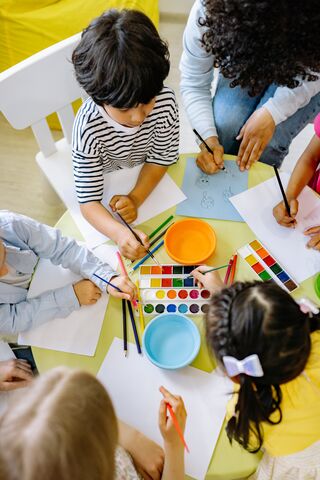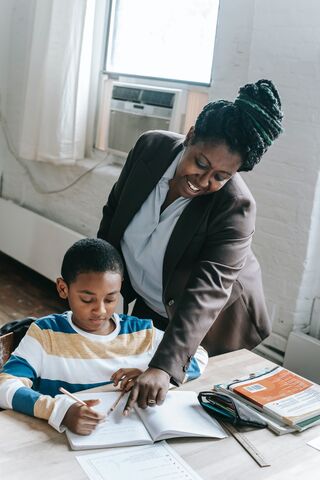Education
4 Signs of an In-Sync Classroom
The "secret sauce" of effective teaching and learning.
Posted April 18, 2022 Reviewed by Jessica Schrader
Key points
- Building an in-sync classroom greatly benefits students' learning and engagement.
- Noticing the interactions between students and teachers is a key starting point.
- We often overlook the value of humor in teaching, but this is key in in-sync classrooms.

If you’re a teacher, you can greatly enhance teaching and learning by being in sync with the students in your class. And if you’re a parent, you might wonder whether your child’s classroom is an “in-sync” one. Here’s a checklist of signs:
1. You hear apologies relatively often—and not only about big things.
It’s not always about kids getting in a huge fight, or someone really hurting someone else’s feelings. Apologies can come easily, as students don’t feel ashamed or embarrassed to admit the need for repair. And the same goes for teachers. When teachers have made a mistake or just said something they wished they hadn’t, they feel empowered to apologize as well.
Being able to apologize well is just as important as getting things “right.”
Why does this matter? When everyone in a classroom feels able to apologize without it being a big deal, they’re far more capable of taking risks. They can challenge themselves and not feel ashamed of getting things wrong. And they can encourage their peers to do so as well.
2. You often hear laughing back-and-forth.
Kids of all ages need to be known and seen for who they are individually—and laughter can be a big part of that.
This isn’t just about joking. When you hear kids easily able to discuss with their peers, or debate about small or big topics, they’re developing social skills while learning the content. And when you hear a teacher who encourages that back-and-forth, you’re often hearing someone who knows the importance of relationships. Kids can’t learn if they don’t feel secure with those around them. That may mean using "affinity humor," or humor that brings you closer together, rather than "aggressive humor" that is more about making fun of others.

3. Is the teacher picking up on little challenges?
We hear a lot about high-stakes assessments—especially tests that mark how well a child is progressing in reading or math. But in an in-sync classroom, there are small check-ins that go well beyond these assessments. They take place every day.
Why is this important? To pick up on little challenges before they become big ones, teachers need a close ear to the ground. This can be hugely difficult in classrooms where there aren’t enough teachers, or where teachers don’t have enough downtime to observe or follow individual kids. That’s why having this time is so important. It lets teachers do the kind of daily check-ins and shift teaching and learning in response to minor challenges.
4. Kids respond without being asked.
No teacher likes to feel like they’re pulling teeth, getting kids to answer. And, in an in-sync classroom, it shouldn’t be—at least, not most of the time.
When kids feel engaged, they want to answer and discuss. Or, for the quieter kids, they want to take their time to process what they’ve heard. Way back in 1994, one study found that the average teacher paused less than a second and a half before continuing to talk or asking another question. Ironically, this time was even less when the teachers perceived the child as “slow.”[1]
Instead of going so quickly, the author Robert Stahl suggests that teachers should ask clear, well-structured questions, then wait around three seconds. This lets kids have the “think time” they need to formulate their answers. This also gives more opportunities for the kids who aren’t as fast to respond.

When you have an in-sync classroom—or when your child is in one—you’re far more likely to support student learning and growth. Children learn to listen more deeply to their teachers and peers and become more comfortable with taking intellectual risks. From this starting point, the classroom culture becomes warm and welcoming to many different learning styles and needs. And luckily, even for classrooms that are out of sync, there are small shifts you can make in daily interactions that will help.


